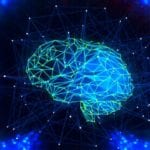 Mysteries
Mysteries  Mysteries
Mysteries  History
History 10 Surprising Stories About the Texas Rangers
 Humans
Humans 10 Philosophers Who Were Driven Mad by Their Own Theories
 Miscellaneous
Miscellaneous 10 Video-Game-Worthy Weapons and Armors from History
 Weird Stuff
Weird Stuff 10 Psychics Who Accurately Predicted Wartime Events
 The Arts
The Arts 10 Pieces of Art Inspired by a Broken Heart
 Health
Health 10 Science Fiction-Sounding New Medical Treatments
 History
History 10 Surprising Facts About the Father of Submarine Warfare
 Space
Space Ten Astonishing New Insights into Alien Worlds
 Weird Stuff
Weird Stuff 10 Bizarre Summer Solstice Rituals Still Practiced Today
 Mysteries
Mysteries Top 10 Haunting Facts About the Ghost Ship MV Alta
 History
History 10 Surprising Stories About the Texas Rangers
 Humans
Humans 10 Philosophers Who Were Driven Mad by Their Own Theories
Who's Behind Listverse?

Jamie Frater
Head Editor
Jamie founded Listverse due to an insatiable desire to share fascinating, obscure, and bizarre facts. He has been a guest speaker on numerous national radio and television stations and is a five time published author.
More About Us Miscellaneous
Miscellaneous 10 Video-Game-Worthy Weapons and Armors from History
 Weird Stuff
Weird Stuff 10 Psychics Who Accurately Predicted Wartime Events
 The Arts
The Arts 10 Pieces of Art Inspired by a Broken Heart
 Health
Health 10 Science Fiction-Sounding New Medical Treatments
 History
History 10 Surprising Facts About the Father of Submarine Warfare
 Space
Space Ten Astonishing New Insights into Alien Worlds
 Weird Stuff
Weird Stuff 10 Bizarre Summer Solstice Rituals Still Practiced Today
Top 10 Twisted Theories About the Future of Technology
In the blink of an eye, technology has taken us from prey to predator and from caves to the cosmos. It’s moved so fast that parent and child no longer live the same life, and it’s only getting faster. Every day technology grows and mutates.
Some futurologists see a technological utopia in our future while some predict catastrophe. All of them agree, however, that things are changing more rapidly and dramatically than they ever have before. It’s about to get really weird on Earth.
From digital beings to computers in the air, from mind control to the end of death, this list gathers ten of the more twisted predictions about the future of technology.
Related: 10 More Incredible Ways Nature Beat Us In Technology
10 Forced Neurohacking
Neurohacking is the process of interfacing with and improving the human mind. At the moment, it ranges from simple at-home attempts at cognitive improvement like nootropic supplements all the way to large-scale studies of brain-machine interface. Many labs across the world have already designed machines that are controlled solely by human thought, and so one question poses itself: can they also design machines to work in reverse and control human thought?
The surprising answer is: almost certainly yes. Some labs have decoded the brain’s electrical activity enough to allow otherwise non-communicative people to “speak” through machines, and our brain’s electricity is not some special variation; if understood well enough, it can be manipulated right back. Though one obvious end result of forced neurohacking is zombie-like slaves, one more realistic and likely imminent effect could be neuro-marketing, by which our devices could actively emit signals that alter our brainwaves to want one product or another.
9 Designer Humans
This topic has generated a lot of press in recent years. As our understanding of the genetic basis for human abilities and disabilities improves, scientists and lawmakers are becoming forced to ask the question: is it appropriate to edit people’s genes before they’re born? That’s the central premise of designer humans, and its implications are as numerous as they are frightening.
On the one hand, designer humans could mean an end to most congenital diseases, including cystic fibrosis, Huntington’s, heart disease, and many cancers. This could easily then extend to common genetic annoyances like poor eyesight and baldness. But the unsettling implications remain. Who will have access to this technology? Who won’t? Will we allow designer humans to compete in sports against non-designed? Will and should we go farther than prevention and alter genes to make us smarter, faster, and stronger? Will there be tiers of different designer humans? Is any of it ethical in the first place?
8 Every Atom a Computer
Moore’s law is a commonly cited prediction about the future of technology that the number of transistors in an integrated circuit will double about every two years. More broadly, Moore’s law states that computers will become faster and more efficient even as they become smaller. Many futurists predict that this trend will continue until we create what is known as zero-size intelligence, a computer more powerful than any ever built and yet with almost (or even literally) zero mass.
This could lead to any number of utopian or dystopian scenarios, as with enough time, energy, and resources, potentially every atom around us could become a supercomputer. One natural fear is the artificial intelligence singularity, as fighting armies of atom-sized supercomputers in our air does not sound fun. Another, perhaps more likely fear, is that the machines don’t become self-aware and rise up but rather stay under human control. This leads us to…
7 Smart Dust
Smart dust. A term first coined by physicist Kris Pister in 1990. Smart dust refers to clouds of nano-robots that would be able to generate an unparalleled amount of data with an equally unparalleled amount of secrecy. Essentially, the very air around us could become swarms of nano-bots that relay our every action and thought to whomever they serve.
This needn’t wait until we reach zero-size intelligence, however. Computers as large as insects could swarm around us even now, drawing little to no attention, recording our every movement.
6 The Coding Olympics
Predictions about the future of technology tend to focus on end-of-the-world and redefined-humanity scenarios, but what will happen to the day-to-day, fun parts of life? Sports, for example, have been a topic of discussion for futurists recently, and most think they’ll be very different in the near future.
Robots already exist which can sink basketball shots, kick field goals, and run laps. Though they may end up replacing human athletes, some futurists predict an even weirder change. Inventor and futurist Dean Kamen notes that the original Olympic games were created around skills useful to that time period, like chariot racing and wrestling. Future Olympics could then hold contests relevant to their own time period, like coding, wiring, and physical calculations.
5 Second Life
Popularized by movies like The Matrix, the idea of a simulated reality is one of the most common predictions of humanity’s future. In The Matrix, humans are farmed as resources and kept docile with the simulated reality. In the real world, however, humanity might willfully retreat into a simulated world simply to escape the ever-deteriorating “real” Earth.
Even without the scary spider-machines forcing us into the illusion, the idea of a complete retreat from reality is frightening. The new digital reality could be created using entirely different rules than we’re used to. Even worse, whoever designs it could imbue it with shortcuts and cheats known only to themselves or a chosen few. In a universe completely created by the few, inequality could reach unimaginable new heights(/lows).
4 The Dead Will Walk
The concept of replicating human consciousness into a digital avatar raises another twisted concept: anyone could be stored forever, and so death would come to mean little. So-called “dead” consciousnesses could be stored in video portraits, a la the Harry Potter universe’s magically interactive portraits.
They could also be stored in lifelike robots, and if the robots become lifelike enough, death would mean essentially nothing, just a quick hop from one body to another. Eventually, the robots containing uploaded consciousnesses could replace biologically-born consciousnesses and, if their bodies were durable enough, functionally end the cycle of birth and death.
3 No More Sky as We Know It
This prediction is actually two different predictions, and both are almost guaranteed to come true. First, the blue sky of our atmosphere will begin to vanish as more and more drones, and potentially personal flying machines, fill the skies. Second, the blackness of space at night will begin to shine and glow as our planet begins to be orbited by more and more—and larger and larger—satellites.
As drones begin to dominate industries like home delivery and long-range tracking, and as satellites likewise begin to establish competing networks of communication and defense, our skies as we know them will disappear. Though at first, that will mean only the occasional speck in the otherwise clear sky, eventually every square mile of the sky could end up as crowded as your average metropolitan street.
2 No More Animals as We Know Them
Currently, the human-led Anthropocene Extinction Event is causing millions of species on Earth to go extinct at a rate hundreds to thousands of times faster than the natural background rate. It’s entirely possible that the near future may be free of wild animals and plants completely. Perhaps the most logical species to prioritize saving over the rest are those that produce food and materials, but already, lab-grown substitutes have hit mass markets as alternatives.
That leaves a world with little to no non-microbial life and little practical, economic reason to regenerate it. This may remind some of the world depicted in Blade Runner, in which animals (like the replicants) are biological entities designed from the ground up, and with good reason; that is entirely possible. After the extinction of the original species, designer animals may be the new norm. And as microbe farms would sustainably produce food, the only purpose those animals may serve would be entertainment for the wealthy and bored.
1 No More Technology as We Know It
Technology is usually thought of as mechanical and electronic, and likewise, technological advancements are thought of as advances in computing and data transfer. In reality, the future of technology may be more biological in nature. Perhaps even completely so.
Traditional manufacturing has proven disastrous to our planet, and alternative processes to generate materials like plastics and fuels are already starting to gain widespread use. Microbes, in particular, are proving useful in generating materials, fuels, and even sustainable food. A natural solution to traditional manufacturing, as well as a natural synthesis of the designer human, designer animal, and microbe materials concepts, is to replace electronic machines with biological machines. Many futurists imagine a human society wherein our food, homes, and even vehicles are entirely grown by designer microbes and perhaps even living entities themselves.








